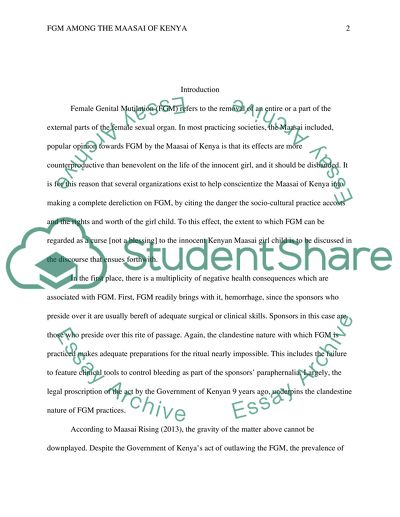Cite this document
(“FGM among the Maasai of Kenya Term Paper Example | Topics and Well Written Essays - 1000 words”, n.d.)
Retrieved from https://studentshare.org/religion-and-theology/1472397-fgm-among-the-maasai-of-kenya
Retrieved from https://studentshare.org/religion-and-theology/1472397-fgm-among-the-maasai-of-kenya
(FGM Among the Maasai of Kenya Term Paper Example | Topics and Well Written Essays - 1000 Words)
https://studentshare.org/religion-and-theology/1472397-fgm-among-the-maasai-of-kenya.
https://studentshare.org/religion-and-theology/1472397-fgm-among-the-maasai-of-kenya.
“FGM Among the Maasai of Kenya Term Paper Example | Topics and Well Written Essays - 1000 Words”, n.d. https://studentshare.org/religion-and-theology/1472397-fgm-among-the-maasai-of-kenya.


